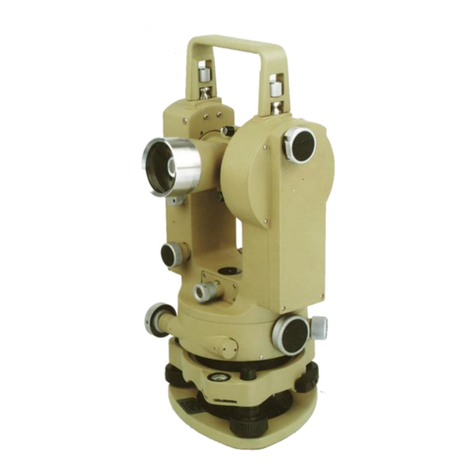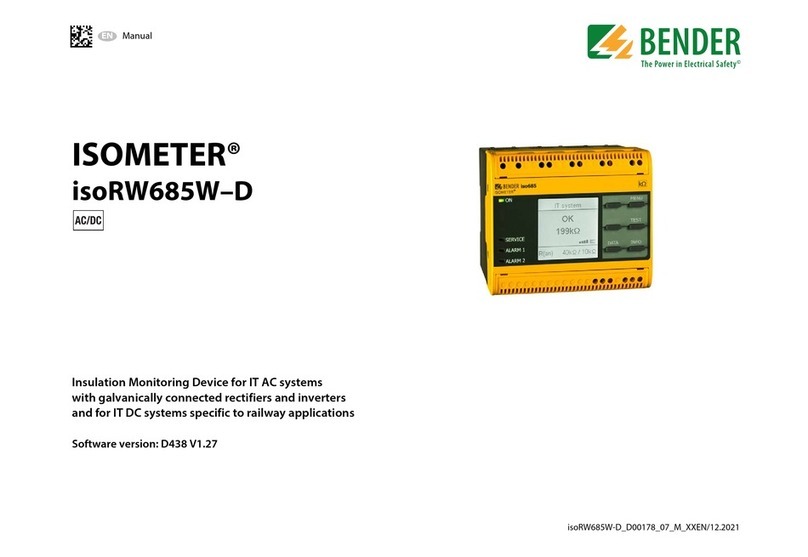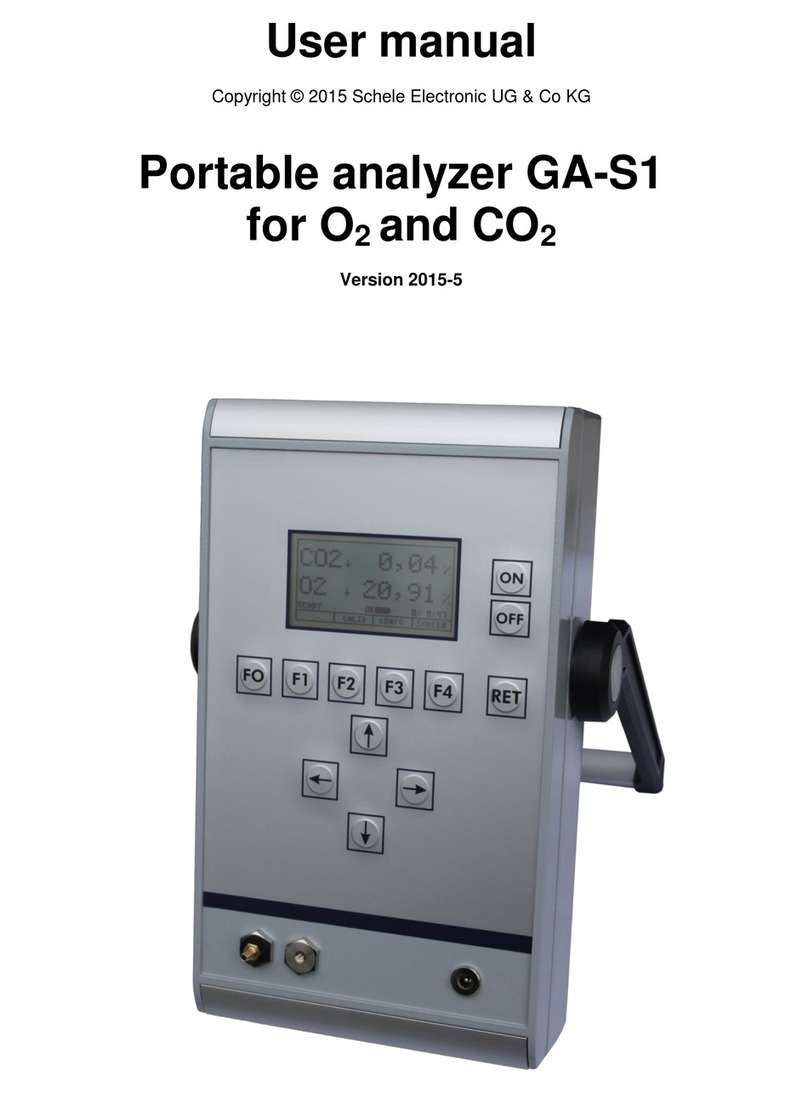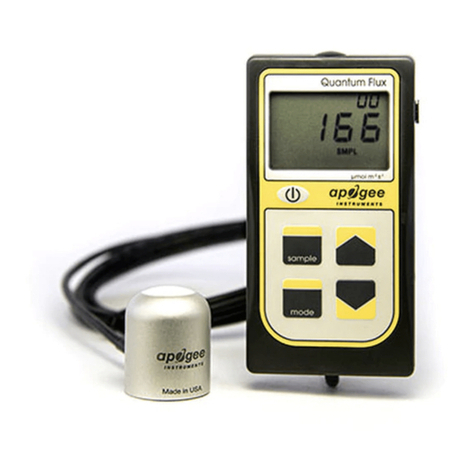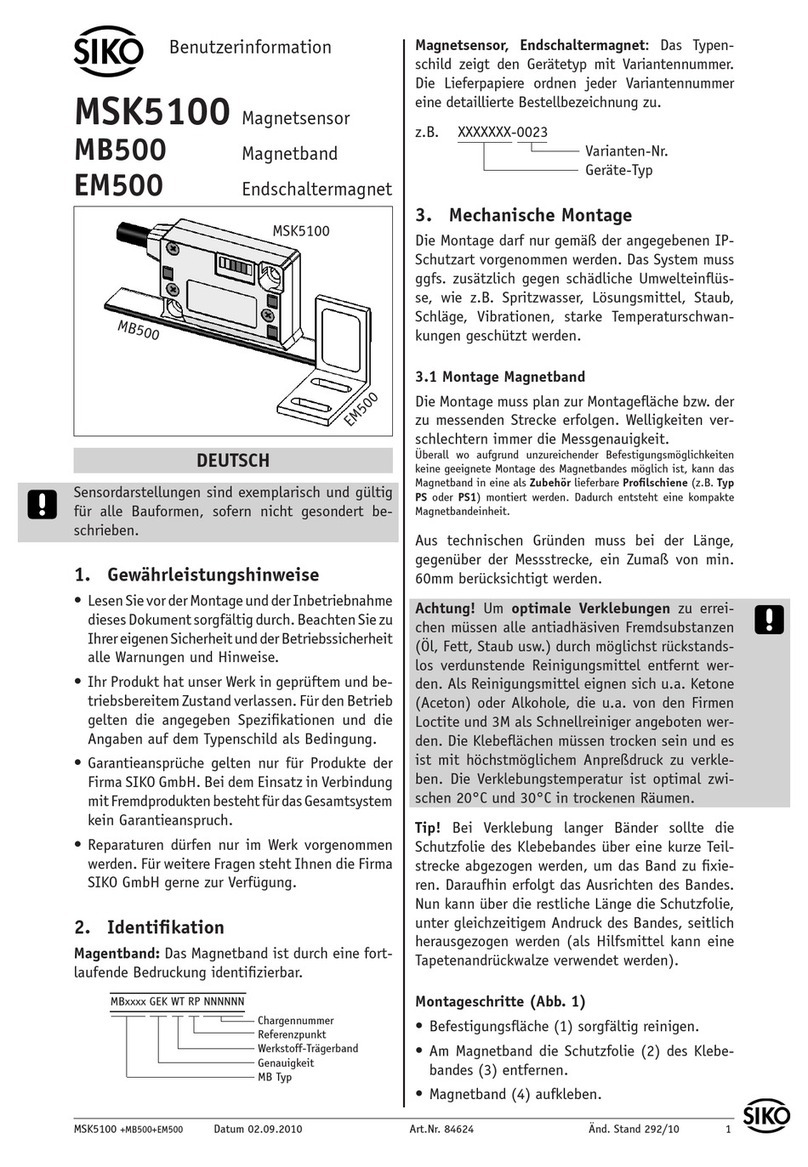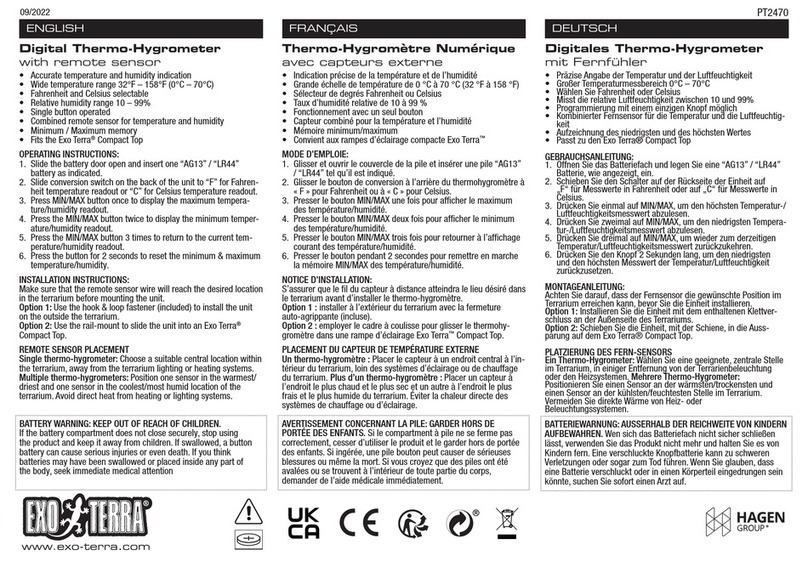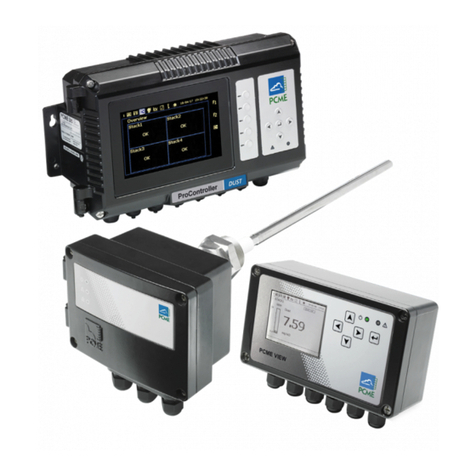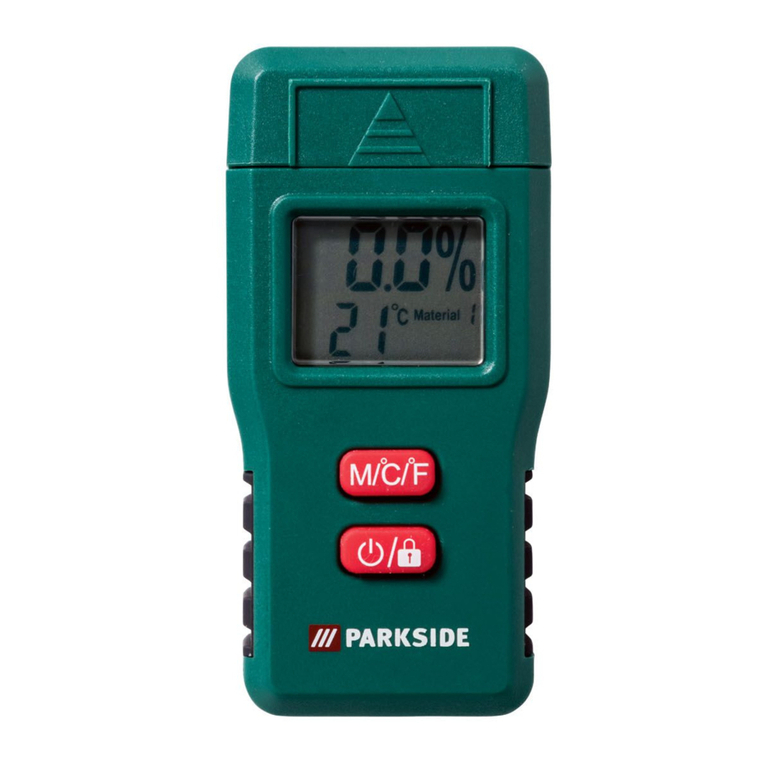Foif RTS680 Series User manual

1
RTS/OTS680 Series
Total StationInstruction Manual
Ver: 2.1.1e(2014-01)
Suzhou FOIF Co., Ltd.
RTS682/RTS685(L)
OTS682-R300/R500/R1000
OTS685-R300/R500/R1000

Dear Customer:
Congratulations! We, FOIF are proud to present you with these series instrument. Your
total station is a rugged and reliable instrument whose performance and design are not
surpassed.
To fully appreciate and protect your investment, we suggest that you take the necessary
time to read and fully understand this manual. We have a dedicated service organization.
If the need arises, please don’t hesitate to contact us.
Thank you for your trust and confidence.

1
Contents
1. Precautions for Safety .................................................................................1
1.1 Note ..............................................................................................................1
1.2 Definition of Indication................................................................................2
1.3 Safety Standards for Laser (OTS series) ......................................................3
2. Preparation before Measurement ................................................................5
2.1 About Battery ...............................................................................................5
2.1.1 Battery Power Symbol ..............................................................................5
2.1.2 Replace the Battery ...................................................................................6
2.1.3 Recharge the Battery .................................................................................6
2.2 Setting Up the Instrument ............................................................................7
2.3 Centering and Levelling-Up.........................................................................7
3. Basic Functions ...........................................................................................9
3.1 Nomenclature ...............................................................................................9
3.2 Basic Key Operation ..................................................................................11
3.3 Display .......................................................................................................12
3.4 Mode Diagram............................................................................................13
3.5 Power On/Off .............................................................................................14
3.5 Registration & Demo Mode .......................................................................15
3.6 How to Input Number and Alphabet ..........................................................16
3.7 How to Configure.......................................................................................17
3.8 How to Set Parameters ...............................................................................19
3.8.1 Measure Condition Setting......................................................................19
3.8.2 Instrument Basic Setting .........................................................................20
3.8.3 Communication Port Setting ...................................................................21
3.8.4 Unit Setting .............................................................................................22
3.8.5 Date & Time Setting................................................................................23
3.8.7 Key Function Setting...............................................................................23
3.8.6 EDM Setting............................................................................................25
4. Angle Measurement ..................................................................................26
4.1 Measure a Horizontal Angle of Two Points ...............................................26
4.2 Set the Horizontal Angle to a Required Value............................................27
5. Distance Measurement ..............................................................................28
6. Coordinate Measurement ..........................................................................30
6.1 Input the Occupied Point Data ...................................................................30
6.2 Azimuth Setting..........................................................................................32
6.3 3D Coordinate Measurement .....................................................................33
7. Stake out Measurement .............................................................................35

2
7. 1 Distance Stake out .....................................................................................35
7.2 Coordinates Stake out Measurement..........................................................37
7.3 REM Stake out Measurement.....................................................................38
8. Area ...........................................................................................................40
8.1 Area Calculation by Measured Data...........................................................40
8.2 Area Calculation by Reading Existed Coordinates ....................................41
9. Offset Measurement ..................................................................................43
9.1 Single-distance Offset Measurement..........................................................43
9.2 Angle Offset Measurement.........................................................................44
9.3 Dual-Distance Offset Measurement ...........................................................46
10. MLM .......................................................................................................48
10.1 Measuring Distance between Two or More Points ..................................48
10.2 Change the Starting Point.........................................................................49
11. REM ........................................................................................................50
12. Resection .................................................................................................51
12.1 Coordinate Resection ...............................................................................52
12.2 Elevation Resection..................................................................................53
12.3 Resection Calculation Process .................................................................55
12.4 Precautions When Performing Resection.................................................56
13. Point Projection .......................................................................................57
13.1 Define Baseline ........................................................................................57
13.2 Point Projection........................................................................................59
14. Stake out Line..........................................................................................60
14. 1 Define Baseline .......................................................................................60
14. 2 Stake Out Line-Point...............................................................................61
14.3 Stake out Line/Line ..................................................................................62
15. Traverse Surveying..................................................................................64
15.1 Save Coordinate .......................................................................................64
15.2 Read Coordinate.......................................................................................65
16. Inverse .....................................................................................................66
17. Polar Coordinates Calculation.................................................................67
18. Repetition Angle Measurement..................................................................68
19. Arc Staking Out Measurement ...................................................................70
19.1 Two Point Arc Staking Out.......................................................................71
19.2 Three Point Arc Staking Out ....................................................................72
20. Road Staking Out Measurement.................................................................75
20.1 Input the Start Station...............................................................................76
20.2 Input Road Horizontal Elements..............................................................76

3
20.2.1 Input Line Element................................................................................76
20.2.2 Input Circle Element .............................................................................77
20.2.3 Input Spiral Element..............................................................................78
20.2.4 Road Horizontal Element Editing .........................................................78
20.3 Input Road Vertical Elements...................................................................80
20.3.1 Input Vertical Road Element. ................................................................80
20.3.2 Edit Vertical Road Element ...................................................................81
20.4 Road Calculation......................................................................................83
20.4.2 Additional Station Setting .....................................................................84
20.4.3 Road Calculation ...................................................................................85
20.5 Road Staking Out Data View ...................................................................86
20.6 Road Stake Out.........................................................................................87
20.7 Road File Management ............................................................................88
20.7.1 Select a Road File..................................................................................88
20.7.2 Rename a Road File ..............................................................................89
20.7.3 Delete a Road File .................................................................................90
20.7.4 Delete all Road Files .............................................................................91
21. Record .....................................................................................................92
21.1 Record Occupied Data .............................................................................92
21.2 Collect Angle Data ...................................................................................93
21.3 Distance&Coordinate Data ...................................................................94
21.4 Record Note..............................................................................................95
21.5 View Data .................................................................................................96
21.6 Select job ..................................................................................................97
22. JOB Management....................................................................................98
22.1 Storage Media Select................................................................................98
22.2 Select a JOB .............................................................................................99
22.3 Rename a JOB........................................................................................100
22.4 Delete a JOB...........................................................................................101
22.5 Output JOB Data ....................................................................................102
22.6 File Copy ................................................................................................103
22.7 Connect PC via USB port.......................................................................104
23. Known Data Management........................................................................105
23.1 Input Known Point Coordinate by Keys ................................................105
23.2 Input Known Point Coordinate via RS-232C.........................................106
23.3 Delete known point coordinate ..............................................................107
23.4 View known points data .........................................................................108
23.5 Clear all known points’ data...................................................................109

4
24. Code Management.................................................................................110
24.1 Edit Code list..........................................................................................110
24.2 Clear all Codes .......................................................................................111
25. Warning and Error Messages ................................................................112
26. Check and Adjustment ..........................................................................113
26.1 The Instrument Constant ........................................................................113
26.2 Tubular Level .........................................................................................114
26.3 Circular Level.........................................................................................114
26.4 The Optical Sight ...................................................................................115
26.5 Optical Plummet (optional).................................................................115
26.6 Laser Plummet........................................................................................116
26.7 Vertical Cross-hair on Telescope ............................................................117
26.8 Horizontal Collimation Error C..............................................................117
26.9 Tilt Sensor ..............................................................................................118
26.10 Vertical Index Error..............................................................................120
26.11 EDM Optical Axis and the Telescope Sighting Axis Error ..................121
27. Technical Data..........................................................................................123
28. Accessories............................................................................................129
Appendix I: Atmospheric correction formula and chart (Just for reference) .129
Appendix Ⅱ:Correction for refraction and earth curvature.......................131
Appendix III:Connect the TS680 series and PDA with serial port .............132
Appendix IV Connect the TS680 series and PDA with Bluetooth.................134

1
1. Precautions for Safety
1.1 Note
◆Don’t collimate the sun directly
Avoid to insolate the instrument, and don’t collimate the sun directly for protecting eyes
and instrument.
◆Avoiding the librations on the instrument
When transporting, keep the instrument in the case and try your best to lighten librations.
◆Carry the instrument
When carrying,the instrument handle must be hold tight.
◆Check the battery power
Before using it, you should check the power whether it is enough.
◆Battery Maintainence
If the instrument is not in using for a long time, the battery should be taken out from the
instrument and store in seperate place. Meantime, the battery should be charged every
month.
◆Take out the battery
It is not suggested to take out the battery when the instrument is on, otherwise, the stored
data may be lost, so it is better to replace the battery after power off the instrument.
◆Set up the instrument on the tripod
When using it please insure the connection between tripod and instrument is firm. It is
better to work with wooden tripod for the measurement accuracy.
◆Assemble the tribrach on the instrument
The setting of tribrach would influence the accuracy. The tribrach should be check
frequently, the screw which connects the tribrach and alidade must be locked tightly. And
the central fixing screw should be tight.
◆High temperature condition
Don’t put the instrument in high temperature condition for a long time, it is bad for the
instrument performance.
◆Temperature changing sharply
The sharp temperature changing on the instrument or prism will shorten the distance
measurement range, for example, after taking the instrument out from a warm car to a
cold condition, wait for some time, it can be used when it adapts the surrounding
condition.
◆The noise from the instrument
When the instrument working, it is normal if you hear the noise from instrument motor, it
will not affect the instrument work.

2
◆Stored data responsibility
FOIF should not be held liable for the lost data because of wrong operation.
1.2 Definition of Indication
For the safe of your product and prevention of injury to operators and other persons as
well as prevention of property damage, items which should be observed are indicated by
an exclamation point within a triangle used with WARNING and CAUTION statements
in this manual.
The definitions of the indication are listed below. Be sure you understand them before
reading the manual’s main text.
●Do not perform disassembly or rebuilding. Fire, electric shock or burns could result.
Only FOIF authorized distributors can disassemble or rebuilt.
●Do not collimate the sun directly. The eye injury or blind could result.
●Do not cover the charger. Fire could be result.
●Do not use defection power cable, socket or plug. Fire, electronic shock could result.
●Do not use wet battery or charger. Fire, electronic shock could result.
●Do not close the instrument to burning gas or liquid, and do not use the instrument in
coal mine. Blast could be result.
●Do not put the battery in the fire or high temperature condition. Explosion, damage
could result.
●Do not use the battery which is not specified by FOIF. Fire, electric shock or burn could
result.
●Do not use the power cable which is not specified by FOIF. Fire could result.
WARNING:
CAUTION:
!WARNING
!
!
Ignoring this indication and making an
operation error could possibly result in death or
serious injury to the operator.
Ignoring this indication and making an
operation error could possibly result in personal
injury or property damage.

3
●Do not short circuit of the battery. Fire could result.
●When this product encounters disturbance of severe Electrostatic Discharge, perhaps it
will have some degradation of performance like switching on/off automatically and so
on.
●Do not touch the instrument with wet hand. Electric shock could result.
●Do not stand or seat on the carrying case, and do not turn over the carrying case
arbitrarily, the instrument could be damaged.
●Be careful of the tripod tiptoe when setup or move it.
●Do not drop the instrument or the carrying case, and do not use defective belt, agraffe or
hinge. Instrument damage could result.
●Do not touch liquid leaking from the instrument or battery. Harmful chemicals could
cause burn or blisters.
●Please assemble the tribrach carefully, if the tribrach is not stable, series damage could
result.
●Do not drop the instrument or tripod, series damage could result. Before use it, check
the central screw is tight.
1.3 Safety Standards for Laser (OTS series)
OTS680 series adopt the class of Laser Product according to IEC Standard
Publication 60825-1 Amd. 2:2001. According this standard, EDM device is
classified as Class 3R Laser Product when reflectless measurement is selected,
when the prism and reflective sheet is selected as target, the output is equivalent
to the safer class 1. Follow the safety instructions on the labels to ensure safe
use.
CAUTION: CLASS 3R LASER RADIATION WHEN OPEN
AVOID DIRECT EYE EXPOSURE.
CAUTION: CLASS 2 LASER RADIATION WHEN OPEN
DO NOT STARE INTO THE BEAM
!CAUTION
Laser emit

4
Note for Safety
●Never point the laser beam at other’s eyes, it could cause serious injury.
●Never look directly into the laser beam source, it could cause permanent eye
damage.
●Never stare at the laser beam, it could cause permanent eye damage.
●Never look at the laser beam through a telescope or other optical devices, it
could cause permanent eye damage.
1.4 About User
1) This product is for professional use only!
The user is required to be a qualified surveyor or have a good knowledge of
surveying, in order to understand the user manual and safety instructions, before
operating, inspecting or adjusting.
2) Wear required protectors (safety shoes, helmet, etc.) when operating.
1.5 Exceptions from Responsibility
1) The user of this products is expected to follow all operating instructions and
make periodic checks of the product’s performance.
2) The manufacturer, assumes no responsibility for results of a faulty or
intentional usage or misuse including any direct, indirect, consequential damage,
and loss of profits.
3) The manufacturer, assumes no responsibility for consequential damage, and
loss of profits by any disaster, (an earthquake, storms, floods etc.).
4) The manufacturer, assumes no responsibility for any damage, and loss of
profits due to a change of data, loss of data, an interruption of business etc.,
caused by using the product or an unusable product.
5) The manufacturer, assumes no responsibility for any damage, and loss of
profits caused by usage except for explained in the user manual.
6) The manufacturer, assumes no responsibility for damage caused by wrong
transport, or action due to connecting with other products.
!WARNING

5
2. Preparation before Measurement
2.1 About Battery
2.1.1 Battery Power Symbol
NOTE:
◆The working time of battery will be effected by many factors, such as
ambient temperature, recharging time, recharging and discharging times. On the
data safe side, we suggest the users recharge the battery full or prepare several
full batteries before operation.
◆The battery symbol only indicates power capability for current measurement
mode. The power consumption in distance measurement mode is more than in
angle mode, if the instrument enters into distance measurement mode from angle
mode, the power maybe auto-off because of lower battery.
◆The symbol only indicates the supply power but not the instantaneous power
change. And if the measurement mode changes, the symbol will not show the
power’s decrease or increase immediately.
◆It is suggested to check every battery power before field work.
Measurement is i
m
p
ossible
,
it is necessar
y
to re
p
lace or rechar
g
e batter
y
The battery is lower, it is better to replace or recharge it
Measurement is
p
ossible
Meas PC 0.0
ppm 0
SD
VA II
HA P1
DIST SHV1 SHV2 0 S E T

6
2.1.2 Replace the Battery
1) Remove the battery
①Press the button downward as shown left
②Remove the battery by pulling it toward you
2) Mount the battery
①Insert the battery to the instrument
②Press the top of the battery until you hear a
Click.
2.1.3 Recharge the Battery
As above figures show, connect the charger and the battery, then plug the charger
into the outlet of 110V-220V AC power supply, recharging will begin.
NOTE:
◆For a new (or long time no use) battery, in order to fully extend its capacity,
it is absolutely necessary to carry out 3 to 5 complete charging/discharging
cycles, and the charging time must be 10 hours at least each time.
◆The indicator light on the charger will illuminate three separate colors for
varies mode conditions:
Solid Red Light—indicates that the charger is working;
Solid Green Light— indicates that the charge has finished;
Flashing Red Light—indicates no battery on charging, poor connection or some
problems exist.
◆ It is recommended to continue charging for 1 or 2 hours after the light turn
green.
◆Once the red light flashes constantly after the charger is plugged into the
outlet of 110V-220V AC power supply, please remove the battery and
reconnected it after 3 or 5 min.

7
2.2 Setting Up the Instrument
Mount the battery in the instrument before performing this operation because the
instrument will tilt slightly if the battery is mounted after leveling.
I. Set up the tripod first: extend the extension legs to suitable lengths and tighten
the screws on the midsections. Make sure the legs are spaced at equal intervals
and the head is approximately level. Set the tripod so that the head is positioned
over the surveying point. Make sure the tripod shoes are firmly fixed in the
ground.
II. Mount the instrument on the tripod head. Supporting it with one hand, tighten
the centering screw on the bottom of the unit to make sure it is secured to the
tripod.
2.3 Centering and Levelling-Up
1. Position tripod legs so that the plummet is aimed to the ground mark point.
Turn the focusing ring of the optical plummet to focus.
2. Turn three footscrews of the tribrach till the center of reticle exactly coincides
with the surveying point in any position.
3. Move the tripod legs to centre the circular level. The instrument is now
roughly leveled-up.
4. Center the bubble in the circular level
Loosen the horizontal motion clamp, and
turn the instrument till the plate level is
parallel to a line shaped with screws A
and B. Adjust the screws A and B to make
the bubble in the center of the level.
Screw B
Screw A
Plate level
Screw C

8
Turn the instrument approximately 90°.
Adjust screw C, till the bubble in the center
of the level.
Repeat above steps until the bubble remains in the center of the plate level while
the instrument is rotated to any position.
5. Center the surveying point again
Loosen the centering screw slightly. Looking through the optical plummet
eyepiece, slide the instrument over the tripod head until the surveying point is
exactly centered in the reticle. Re-tighten the centering screw securely.
6. Check again to make sure the bubble in the plate level is centered.
If not, repeat procedure 4.
2.4 Accurate Levelling-Up with Electronic Level on screen
It is convenient for 670/680 series to level-up with electronic level, especially
when it is difficult to observe the circular level and plate level.
1. Power on the instrument and enter into
measurement mode, press F1: [TILT] at P3
or press key {BS} directly, and the electric
level displays on screen.
2. Level it by turning three foot screws, see
above operation “3. Center the bubble in the
plate level”. Be sure the ● is always in the
center.
Note: 1. On this menu you can turn on/off the X/Y compensator by pressing ▲
or ▼ key.
2. If the instrument is equipped with laser plummet, after opening this menu, the
laser plummet adjusting bar will display. With pressing or key the laser
lightness can be adjusted.
Screw A Screw B
Screw C
Tilt Value
X OVER X
Y OVER
Tilt Mode
XONYON
Lightness
Tilt Value
X -0°00’02’’ X
Y -0°00’03’’
Tilt Mode
XONYON
Lightness
Y
0
0
Y

9
3. Basic Functions
3.1 Nomenclature
Handle
Optical sight
Objective
Plate level
Screen
Tribrach
Keypad
Handle screw
Instrument height mark
Model label
Battery
RS-232C port
Horizontal
motion clamp
Horizontal
tangent screw
Horizontal
motion clamp
Horizontal
tangent screw

10
Plummet
Serial numbe
r
Focusing knob
Eyepiece
Instrument height mark
Leveling screw

11
3.2 Basic Key Operation
Keys Description
F1~F4 Select the functions matching the softkeys
0~9 1.Input number when numeric input
2.Input characters when alphabetic input
●Input a decimal point
±Input plus/minus sign
Power Power on/off
★Enter into setting mode directly
Cnfg Enter into config mode directly
ESC Escape to the previous menu or mode
Shift 1. Shift between number and alphabetic when inputting
2.Shift targets model when measuring
BS 1. Delete the character at the left of the cursor when inputting
2. Open electronic level menu
Space 1. Input a black space when inputting
2. Input the target or instrument height
Func Turn page
ENT 1. Select/Accept input data
2. Accept the option when selecting

12
3.3 Display
The LCD could display 8 lines with 24 characters per line. In measurement mode, it
displays some common information in above 7 lines and displays soft functions in the last
line.
Status screen
Basic measure mode
Measuring
Dist
Fine ppm0
-----※STOP
Measuring now
FOIF OTS680
S/N Y100006
Ver
10-04-26
Date 08/15/2006
Time 10:01:59
JOB JOB1
MEAS MEM
Application software version
Instrument model
Current power
The active JOB
Meas PC 0.0
ppm 0
SD
VA II
HA P1
DIST SHV1 SHV2 0 S E T
Target type
Face II
Page
Current memory

13
3.4 Mode Diagram
Measmode
{ESC}
[MEAS]
FOIF OTS680
S/N Y100006
Ver
10-04-26
Date 08/15/2006
Time 10:01:59
JOB JOB1
MEAS MEM
EDMOCC OFST REC
CORD MENU HOLD H S E T
Meas PC 0
ppm 0
SD
VA II
HA P1
DIST S H V 1 SHV2 0SET
[MENU]
[REC]
REC
1.Occ. data
2.Angle data
3.Collect Points
4.Note
5.View
6.JOB select
Menu P1
1.Coordinate
2.Stake out
3.Area
4.Offset
5.MLM
6.REM
7.Resection
Menu P2
1.Point projection
2.Line stake out
3.Traverse
4.Inverse
5.Polarize
6.Repeat Measure
7.Arc staking out
[MEM] {ESC}
Memory
1.JOB
2.Known data
3.Code
4.Storage Media Select
5.USB
{3}
{1}
{2}
Known data JOB1
1.Key input
2.Com input
3.Delete
4.View
5.Clear
6.Com setting
Code
1.Code Edit
2.Clear List
JOB
1.JOB select
2.JOB rename
3.JOB delete
4.Download
5.Com setting
6.File copy
Menu P3
1.Road Calculation

14
Setting mode (Press {★} directly) Config mode (Press {Cnfg} directly)
3.5 Power On/Off
I. Power on
1. Confirm the instrument is leveling, press the red
key {POWER}.
2. The instrument will power on and display the status
screen.
II. Power off
Press {POWER} key, the instrument will ask you to turn
off the instrument or not, press F3(Yes), it will be
turned off, press F4(No) back to previous screen.
POWER OFF?
YES N O 1
FOIF OTS680
S/N Y100056
Ver
10-06-21
Date 07/12/2010
Time 10:01:59
JOB JOB1
MEAS MEM
Initing……
Config
1.Meas condition
2.Inst config
3.Inst adjust
4.Com setting
5.Unit
6.Date & Time
7.Key Function
Inst Config
1.Backlight :YES
2.Laser(OTS) :NO
3.LCD contrast :5
4.Reticle lev :7
5.Key Beep :YES
6.EDMSignal :
EDM
Inst Config
1.Triggerkey :YES
2.Guide light :5
EDM
P1
P2 (Depends on different
instrument configuration,
difference is
p
ossible
)
This manual suits for next models
9
Table of contents
Other Foif Measuring Instrument manuals
Popular Measuring Instrument manuals by other brands

Endress+Hauser
Endress+Hauser Thermophant T TTR31 operating instructions
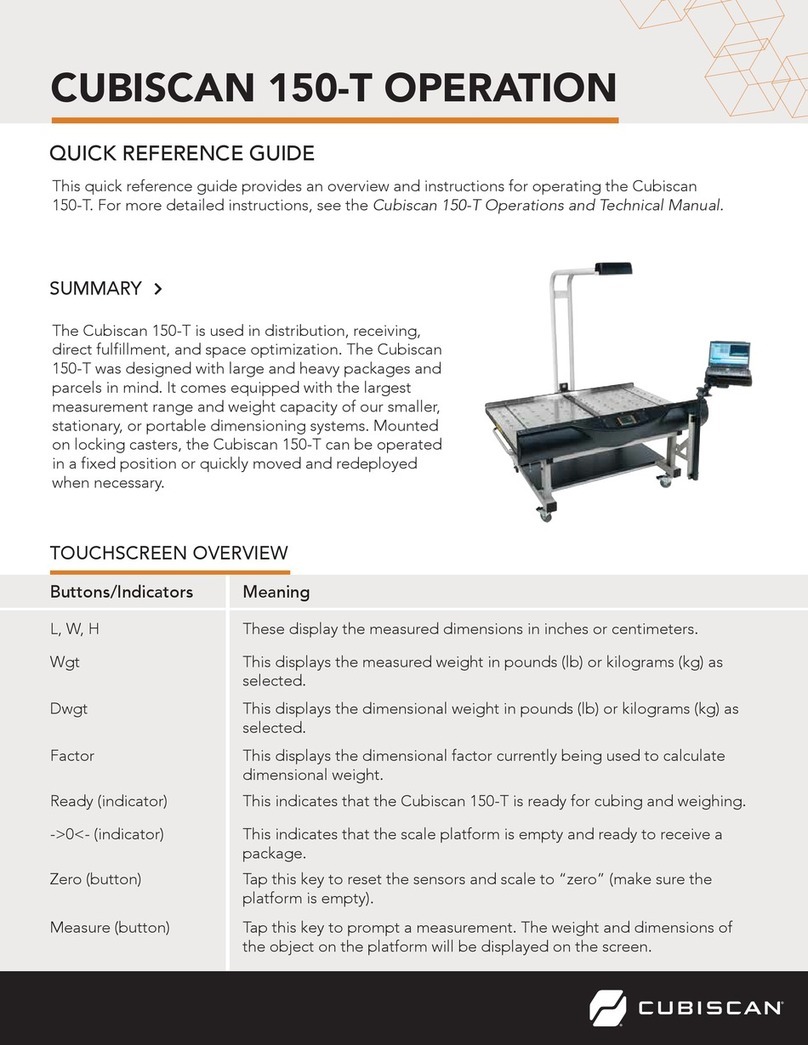
CubiScan
CubiScan 150-T Quick reference guide
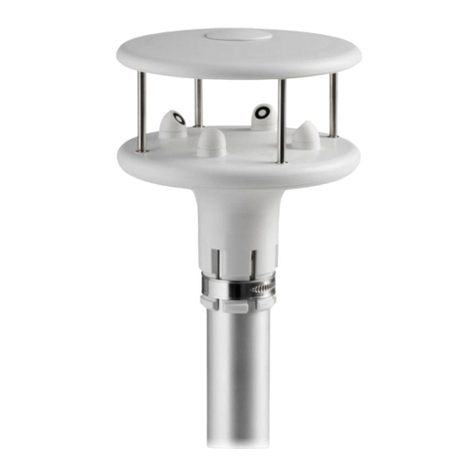
GHM
GHM Delta OHM HD53LS Series operating manual
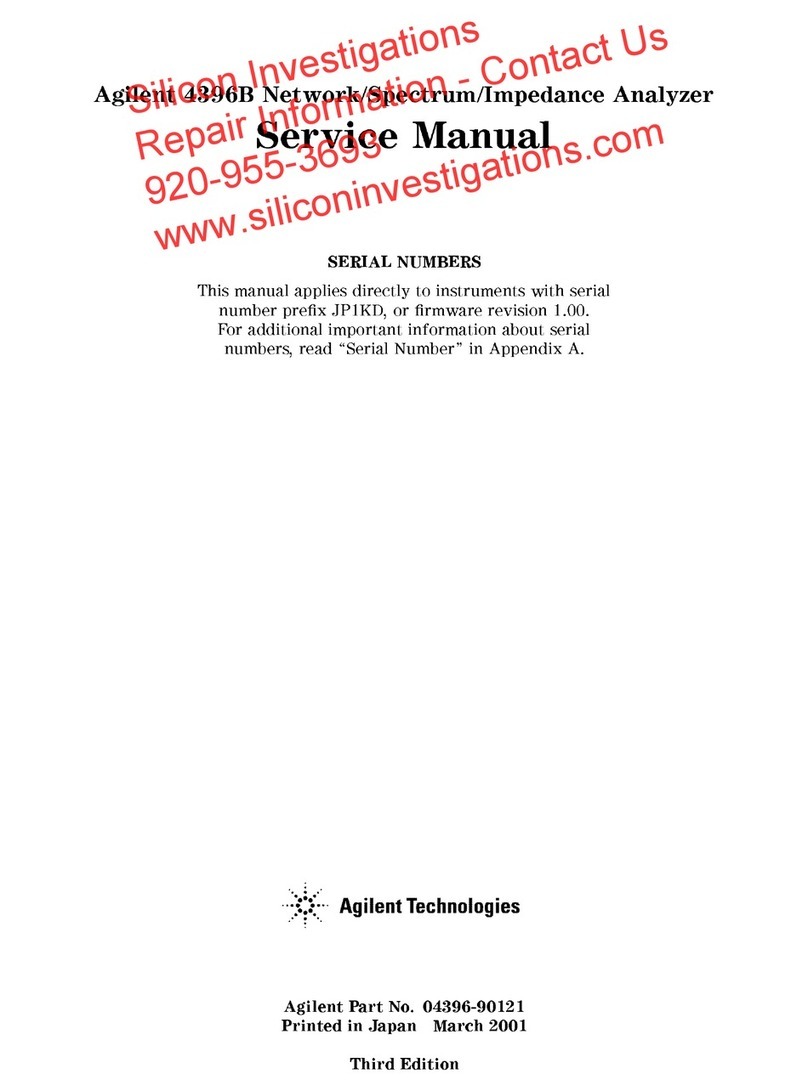
Agilent Technologies
Agilent Technologies Agilent 4396B Service manual
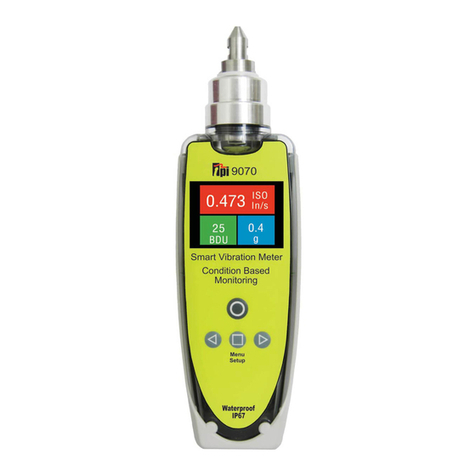
TPI
TPI 9070 instruction manual

Optibelt
Optibelt TT Series Quick reference guide
